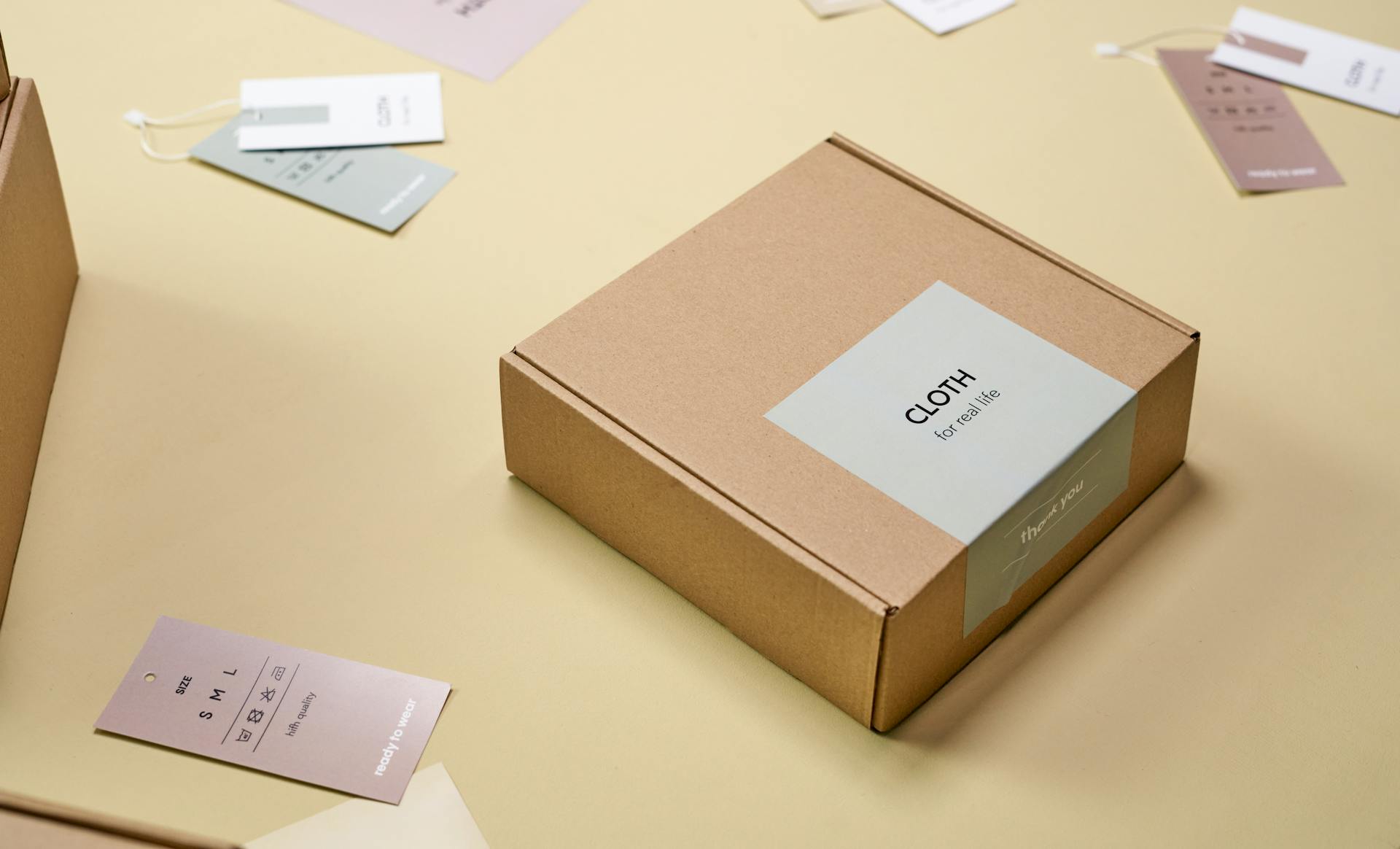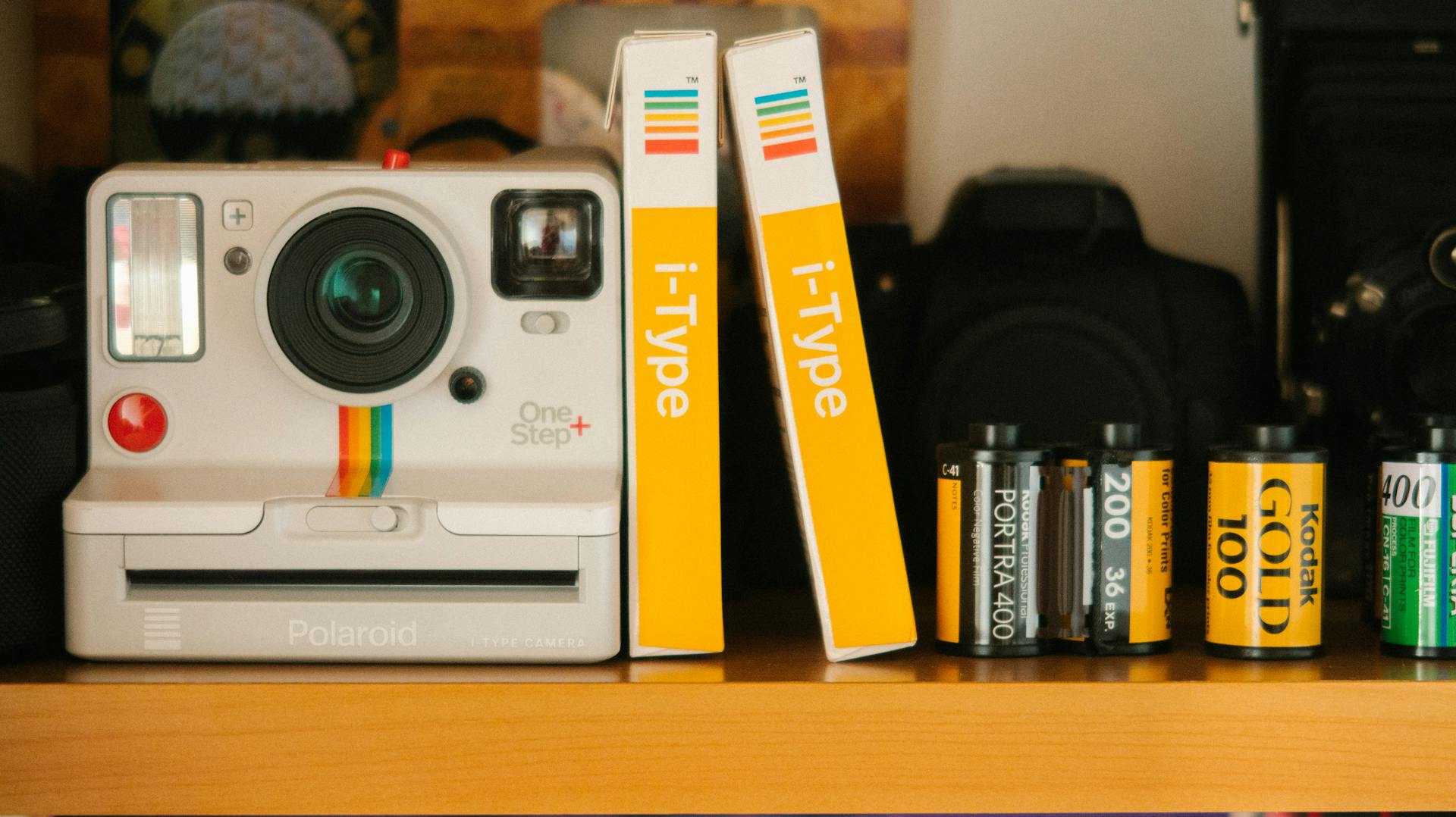
Stretch film and shrink wrap are two popular packaging materials used to protect and secure goods during transportation and storage. Stretch film is made from a thin, flexible plastic sheet that can be wrapped tightly around objects.
Stretch film is often used for bundling and securing small to medium-sized items, such as boxes, pallets, and machinery. In contrast, shrink wrap is typically used for larger items, like appliances and furniture.
Stretch film is usually less expensive than shrink wrap, making it a cost-effective option for many businesses.
What Is Stretch Film and Shrink Wrap
Stretch film is a thin, flexible plastic sheet commonly constructed of polyethene used to lock and secure cased items onto a pallet.
The tension while the stretch film is wrapped around can be very high, producing a constrictive force that keeps the weight in place.
Stretch film is designed to be wrapped tightly around pallets, allowing it to maintain its shape and keep items secure.

This type of film is often used to secure items that need to be transported or stored, providing a tight seal to prevent shifting or damage.
The high tension of stretch film also helps to prevent items from falling off the pallet, making it a reliable choice for securing heavy loads.
Key Differences
Shrink wrap and stretch wrap are two popular types of plastic film used in packaging, but they have distinct differences.
Shrink wrap is made from polyolefin plastic, which is a different material than the polyethylene plastic used in stretch wrap.
Shrink wrap is typically used for sealing and protecting individual items, while stretch wrap is ideal for securing pallet loads and boxes with tension.
Stretch film is elastic and made from materials like LLDPE, which allows it to stretch and conform to the shape of items.
Shrink film, on the other hand, shrinks with heat and is made from materials like polyolefin or PVC.
Discover more: Polyolefin Heat Shrink Film
Here are the key differences between shrink wrap and stretch wrap at a glance:
The glass transition temperature (Tg) of shrink film is a characteristic that affects its shrinkage, and it's typically produced with a Tg slightly lower than the heat application temperature.
Choosing the Right One
If you're deciding between stretch wrap and shrink wrap, consider the type of product you're packing. Shrink wrap is perfect for individual items with primary packaging, while stretch wrap is ideal for warehouses and distribution centers handling high volumes of products in secondary packaging.
For high-volume applications, stretch wrap's elasticity makes it a great choice, as it can return to its initial state even when wrapped multiple times around large shipments. This ensures maximum security during transit.
When choosing between the two, also think about your budget and environmental concerns. Shrink wrap can be expensive, so if you have a limited budget, a budget-friendly plastic wrap might be a better option. Additionally, consider your customer base and whether they follow environmentally friendly policies. If so, you may want to opt for a biodegradable shrink film instead.
Worth a look: High Density Polyethylene Foam Sheets
Pros and Cons
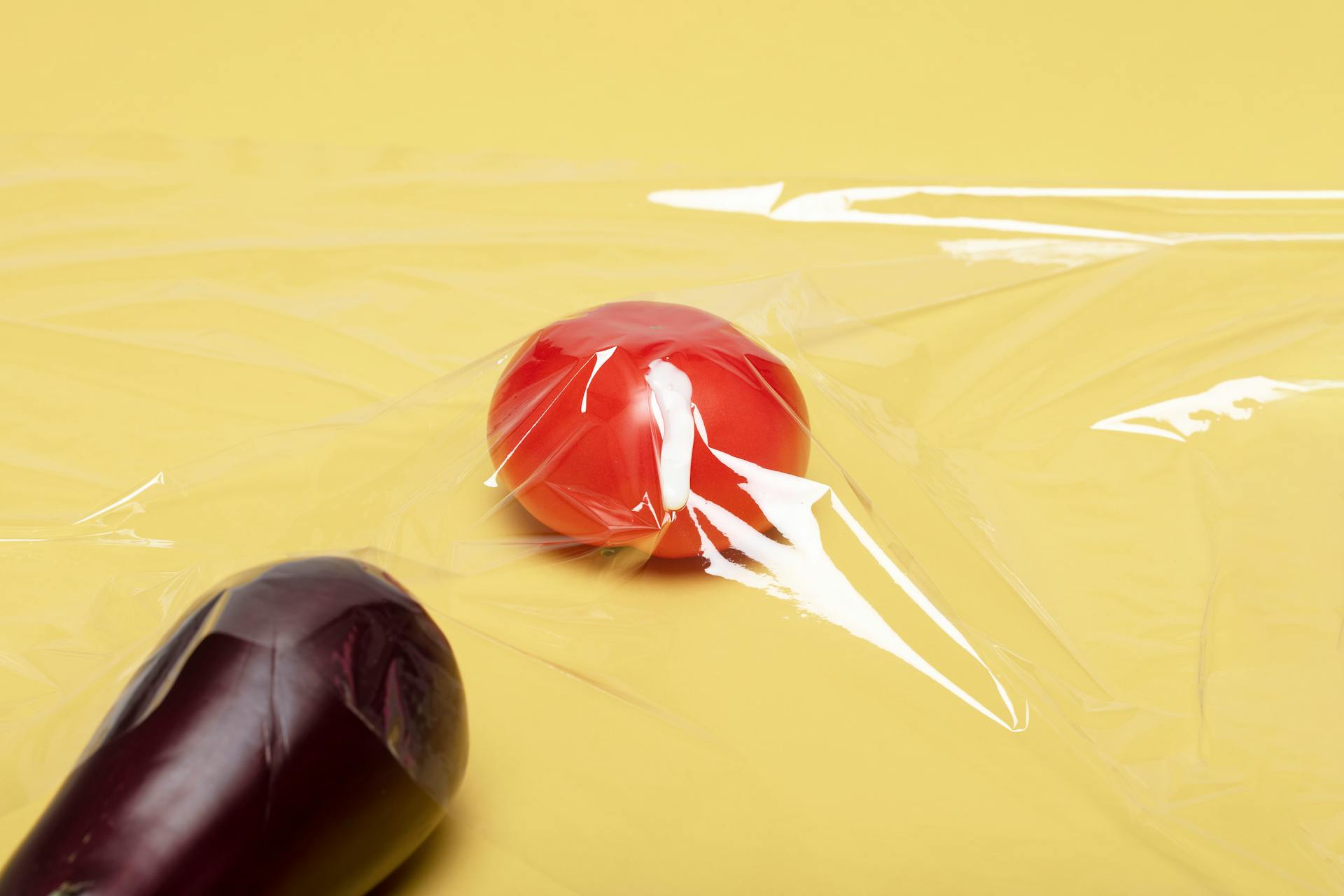
Shrink wrap is a popular choice for packaging and protecting goods, but it's not without its drawbacks.
One major advantage of shrink wrap is its ability to provide a tight seal, preventing moisture and air from entering or escaping.
Shrink wrap is also relatively inexpensive compared to other wrapping solutions.
However, shrink wrap can be difficult to remove without damaging the packaged item.
It's worth noting that some types of shrink wrap are not suitable for use with certain materials, such as glass or metal.
Do I Need It?
Shrink wrap is a great option if you need to protect individual items, like food or accessories. It provides a direct barrier against damage and is ideal for high-volume product packaging orders.
You'll need a shrink-wrapping machine to use shrink wrap, which can be a significant investment. Shrink wrap film is also typically more expensive than alternatives.
On the other hand, stretch wrap is perfect for bundling large batches of items, like palletized loads. It's a strong, durable, and flexible film that wraps around various shapes and sizes.
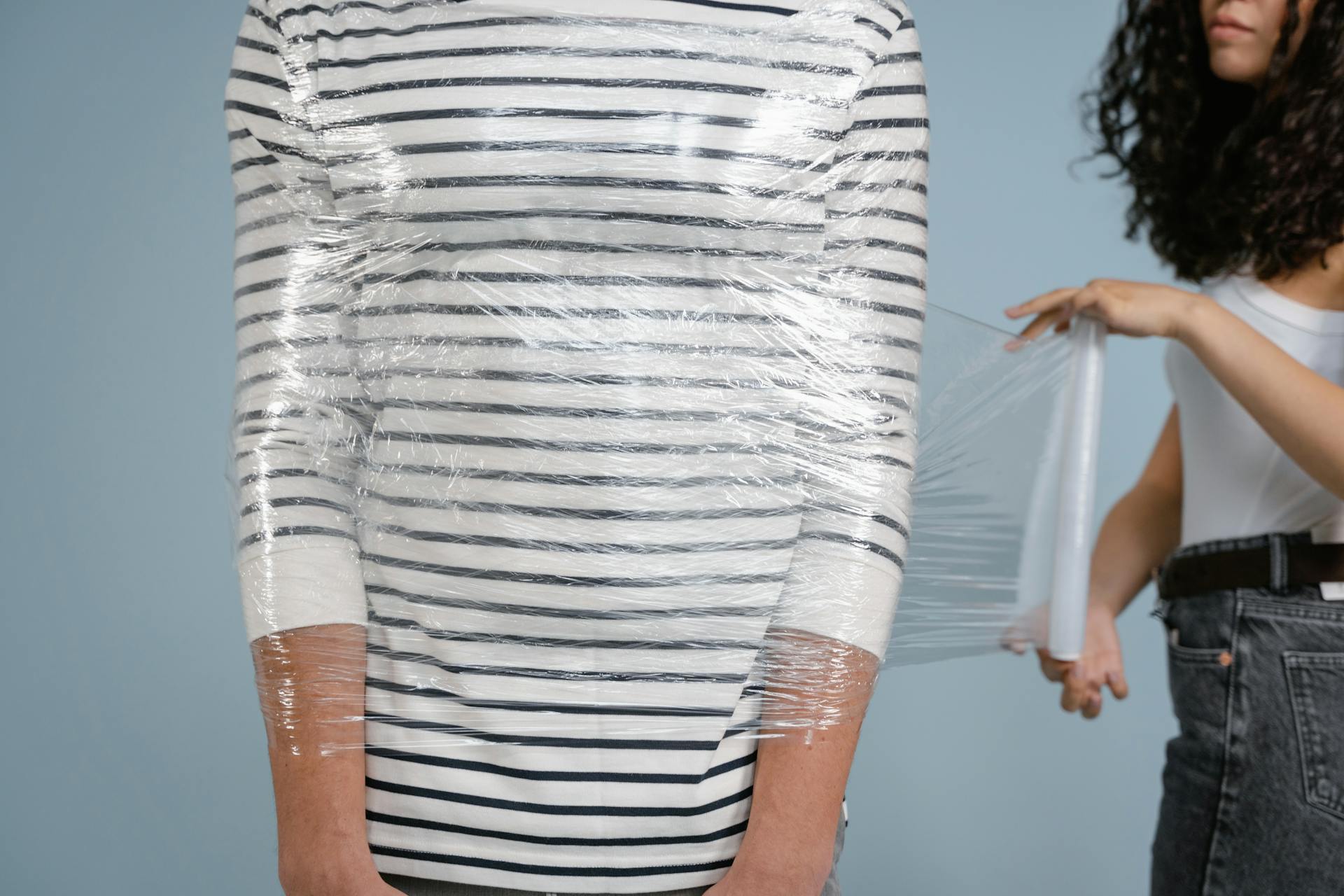
Stretch wrap requires careful application to avoid damaging the products. If the wrong size is selected, it can also cause harm to the items.
To help you decide between shrink wrap and stretch wrap, here are some key factors to consider:
Temperature control is also a concern with shrink wrap, as it can wrinkle if the temperature is too high or become too hard if it's too cold.
Choosing the Right One
If you're looking for a sustainable option, consider stretch wrap, which is made from recyclable material.
Stretch wrap is incredibly versatile and can wrap around various shapes and sizes of products, making it a great choice for warehouses and distribution centers.
It's also a budget-friendly option, with a cost that's often lower than shrink wrap.
Stretch wrap is particularly useful for bundling large batches of items, such as palletized loads, and can hold multiple products together for maximum security during transit.

On the other hand, shrink wrap is a better option for individual items, especially those with primary packaging.
Shrink wrap provides a direct protective barrier to items like food and accessories, and is ideal for high-volume product packaging orders.
If you're looking for an environmentally friendly option, shrink wrap might not be the best choice, but stretch film is a better approach.
Here's a quick comparison of the two:
Ultimately, the choice between stretch wrap and shrink wrap depends on your specific needs and requirements.
User Friendliness
Shrink-wrap can be a hassle to use, especially when it needs to be subjected to heat, which can make packing a bit more complicated.
Stretch wrap, on the other hand, is a much easier option, as it doesn't require heat to be applied, making the packing process a breeze.
Packing can be a challenge, but with stretch wrap, you can avoid the hassle of dealing with heat and focus on getting the job done efficiently.
Application and Usage
Stretch film excels at securing and stabilising pallet loads, containers, and objects that must be tightly secured together. Its elasticity ensures that even irregularly shaped objects are securely placed throughout transportation and storage.
Shrink film is regularly used for packaging individual merchandise or bundling smaller objects together, providing a defensive barrier and enhancing product presentation.
To apply stretch film, packers can secure the film to one end of the product and then stretch it as it's wrapped around the product. This technique is essential for its application strategy.
Shrink film, on the other hand, requires heat to cause the loose film to shrink and take on the shape of the article being wrapped. This heat can be generated using heat sources like heat guns, tunnels, or other specialist machinery.
Equipment Needed
To get started with high-volume packaging projects, you'll need the right equipment. Shrink wrap machines are a must-have, as they help activate the heat shrinking process that seals the film.

A sealer is an essential component of shrink wrap machines, and it comes in two main types: I-bar and L-bar sealers. These machines are used to close open ends and create an enclosed seal.
Hand-held heat guns are also used for lower production levels, providing a convenient and portable way to apply heat to the shrink film. Heat tunnels are larger machines that apply heat to the film when wrapping products for higher production levels.
While shrink wrap machines are designed for high-volume projects, hand stretch film can still be applied manually to pallets. However, specialist machinery is needed for high-volume projects, and pallet turntables are a great investment for speeding up the stretch-wrapping process.
Stretch wrap machines are designed to apply stretch film while turning pallets, making the wrapping process much more efficient. These machines are a game-changer for anyone looking to streamline their packaging process.
Here's a breakdown of the equipment you'll need for high-volume packaging projects:
Application Technique

Stretch film is designed to stretch around objects, making it a great choice for wrapping irregularly shaped items. It's usually applied by securing the film to one end of the product and then stretching it as it's wrapped around the product.
The application technique for shrink film is quite different, requiring heat to cause the loose film to shrink and take on the shape of the article being wrapped.
Application Range
Shrink film excels at securing and stabilising pallet loads, containers, and objects that must be tightly secured together. Its elasticity ensures that even irregularly shaped objects are securely placed throughout transportation and the garage.
Shrink film is commonly used for packaging individual merchandise or bundling smaller objects together, particularly in industries like meal packaging, which provides a defensive barrier and enhances product presentation.
Shrink film's capability to conform to the contours of a product tightly makes it perfect for developing glossy and professional packaging.
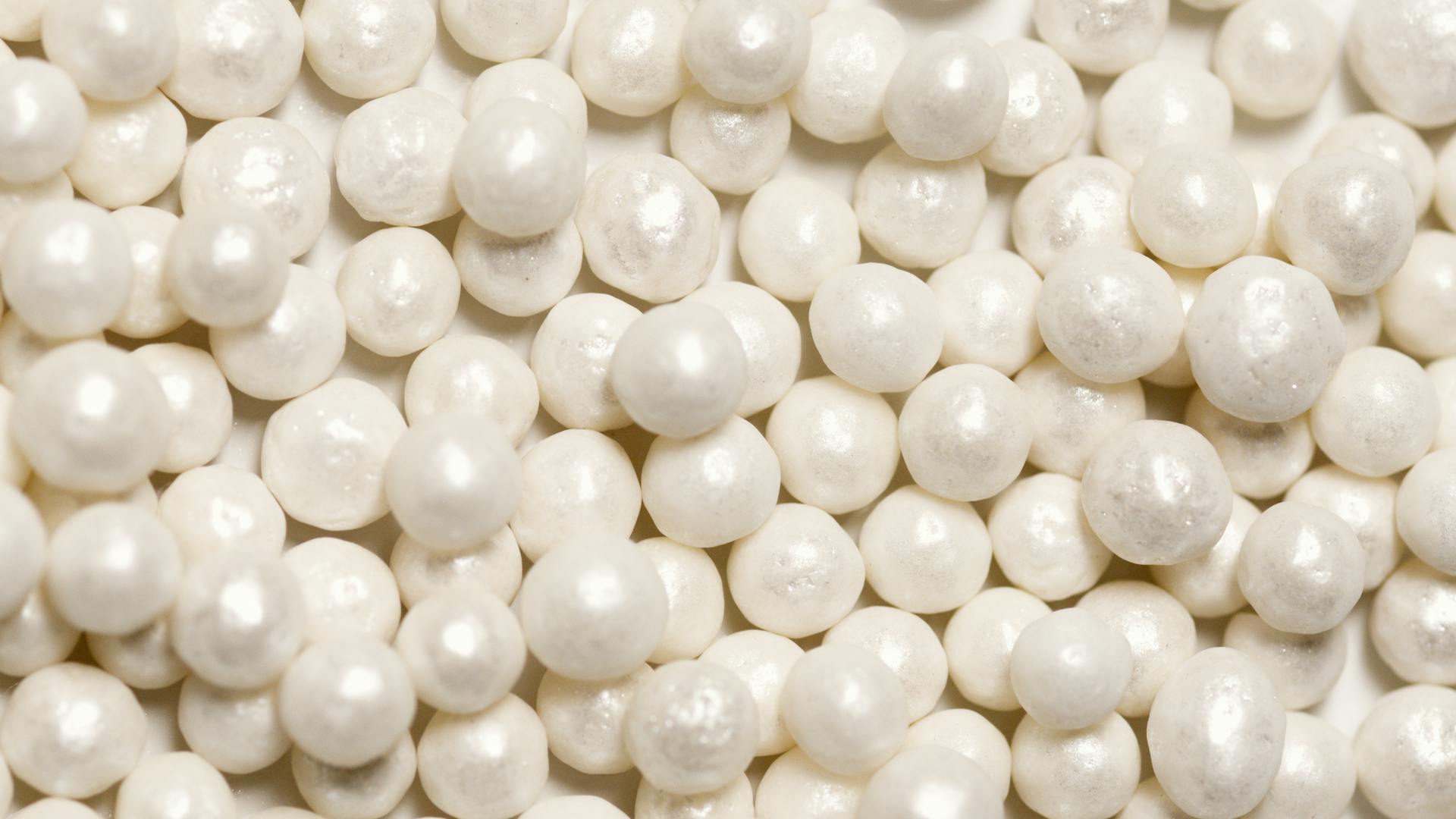
Stretch film, on the other hand, is regularly used for bundling large batches of items, such as palletized loads. It's a strong, durable, and flexible film that wraps around various shapes and sizes and keeps stacked products safe until they reach the retailer, reseller, or other recipients.
Here's a brief comparison of shrink and stretch film:
In general, shrink film is ideal for packaging individual items, while stretch film is better suited for bundling large batches of items together.
Comparison Factors
Stretch film and shrink wrap are two popular packaging options, and there are some key differences between them.
The most common material used for stretch film is low-density polyethylene (LDPE), which is flexible and easy to apply.
Stretch film is typically less expensive than shrink wrap, with prices ranging from $0.05 to $0.20 per square foot.
Stretch film can be applied quickly and easily by hand, making it a great option for small to medium-sized items.
Shrink wrap, on the other hand, requires a heat gun or oven to apply, which can be more time-consuming and labor-intensive.
Shrink wrap offers a tighter seal than stretch film, making it a better option for items that need to be protected from dust and moisture.
The typical lifespan of stretch film is around 2-3 years, depending on the quality of the film and how well it's stored.
Stretch film can be reused multiple times, making it a more cost-effective option in the long run.
Shrink wrap is typically used for larger items, such as pallets and machinery, due to its ability to conform to irregular shapes.
When to Use Each
Shrink wrap is perfect for individual items with primary packaging, especially food products that require a polyolefin wrap. It's also suitable for products that need to breathe, making perforated shrink film a good choice.
Stretch wrap, on the other hand, is ideal for warehouses and distribution centers handling high volumes of products in secondary packaging. It's also a great option if you need to pack multiple products at a time, as it will hold them together in a bundle.
If you have budget constraints, stretch film is a more affordable option compared to shrink film. However, if you need to pack heavy loads, selecting a machine stretch wrapping would be suitable if you have to handle loads above 15 kg.
Here are some key differences between shrink wrap and stretch film to consider:
Ultimately, the choice between shrink wrap and stretch film depends on your specific needs and the type of products you're packing.
Frequently Asked Questions
What is another name for stretch film?
Another name for stretch film is pallet wrap. It's commonly used to tightly bind items together.
Is stretch film waterproof?
Yes, stretch film is waterproof, making it suitable for protecting pallets and contents from moisture and the elements. Its water-resistant properties add an extra layer of protection against damage.
Sources
- https://uspackagingandwrapping.com/shrink-wrap-vs-stretch-wrap.html
- https://compackusa.com/shrink-wrap-vs-stretch-wrap
- http://www.thongguan.com/stretch-wrapping-vs-shrink-wrapping/
- https://stretchwrappingfilm.com/stretch-film-vs-shrink-wrap/
- https://durapak.in/difference-between-stretch-film-and-shrink-film/
Featured Images: pexels.com
